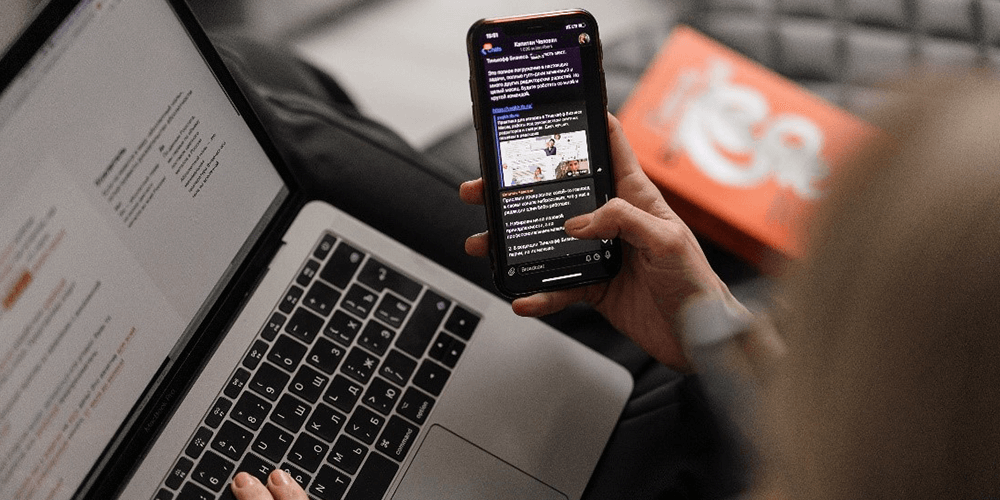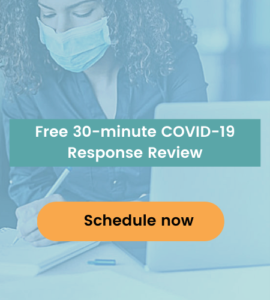- Soluzioni
- Prodotti
- Community
- Risorse
- Azienda
Gli strumenti della Talent Cloud di iCIMS per creare e condividere contenuti da utilizzare per la Talent Attraction all'interno di una strategia di Employer Branding.
Scopri di piùGli strumenti della Talent Cloud di iCIMS per coinvolgere attivamente i migliori talenti
Scopri di piùGli strumenti della Talent Cloud di iCIMS per digitalizzare e ottimizzare le attività di recruiting, selezione e hiring
Scopri di piùGli strumenti della Talent Cloud di iCIMS per supportare progetti di internal mobility per la crescita e lo sviluppo dei migliori talenti in azienda
Scopri di piùComunicare collettivamente con grandi gruppi di candidati e affrontare efficacemente i picchi di assunzioni.
Scopri di piùAccedi agli strumenti che aiutano il tuo team a creare una cultura più inclusiva e a far progredire il tuo programma DEI.
Scopri di piùRiprenditi e rispondi alla nuova normalità del commercio al dettaglio con sistemi di assunzione che sono abbastanza agili da aiutarti ad andare avanti.
Scopri di piùAccelerare l'assunzione di talenti chiave per fornire servizi di supporto e al punto di cura che soddisfino e superino la vostra promessa di soddisfazione del paziente.
Scopri di piùAttrarre e coinvolgere i candidati con competenze tecniche, accelerare le assunzioni per competenze molto necessarie e far progredire le competenze all'interno della vostra preziosa forza lavoro.
Scopri di piùSemplificate la selezione di candidati nel settore finanziario, assicurativo e bancario con una piattaforma unificata costruita per far incontrare i migliori talenti con ruoli difficili da colmare.
Scopri di piùLa tua company strategy si basa sulla tua people strategy. Mantienile allineate con iCIMS Talent Cloud.
Scopri di piùCostruisci un pool di talenti altamente coinvolti per portare avanti la tua attività.
Scopri di piùFornisci gli strumenti adeguati ai team HR garantendo al tempo stesso l'affidabilità e la sicurezza richieste dalla tua azienda.
Scopri di piùOffri esperienze digitali su misura i che guidano la trasformazione dei talenti grazie alla Talent Cloud di iCIMS.
Scopri di piùL'ATS numero 1 sul mercato, aiuta il team di recruiting e selezione ad affrontare le sfide più difficili. Il nostro software di recruiting basato su cloud è progettato per supportare team HR di aziende internazionali e grandi attori sui diversi mercati.
Scopri di più Contattaci per una demoPromuovi il tuo employer brand già sulla tua career page: attrai i migliori candidati e guidali nella scelta delle offerte più adatte grazie alle funzioni di skill matching in website di ultima generazione.
Scopri di più Contattaci per una demoCostruisci e anima i tuoi pool di talenti, coinvolgi i candidati attraverso campagne di marketing e usa la corrispondenza dei talenti per trovare i profili giusti per le tue offerte.
Scopri di più Contattaci per una demoPermetti ai candidati di interagire con la tua azienda 24/7 per trovare le opportunità adeguate, verificare di avere i requisiti, candidarsi e pianificare i colloqui con un assistente digitale che sfrutta l'intelligenza artificiale.
Scopri di più Contattaci per una demoSemplificate il sito onboarding con processi automatizzati che massimizzano l'impegno e accelerano la produttività.
Scopri di più Contattaci per una demoLo strumento ideale per digitalizzare il processo di recruiting migliorare la tua candidate experience e snellire i processi HR per assumere i giusti talenti.
Scopri di più Contattaci per una demoLo strumento per verificare e certificare il livello linguistico di candidati, impiegati o studenti in qualsiasi momento ovunque si trovino.
Scopri di più Contattaci per una demoiCIMS Opportunity Marketplace è lo strumento ideale per migliorare l'esperienza dei tuoi dipendenti garantendo percorsi di crescita e mobilità interna per aumentare la talent retention
Scopri di più Contattaci per una demoSfrutta i messaggi WhatsApp, Facebook e sms per comunicare con i potenziali candidati o con gli impiegati direttamente dall'Applicant Tracking System.
Scopri di più Contattaci per una demoTrasforma l'esperienza dei talenti mostrando il tuo autentico employer brand attraverso le testimonianze video generate dai dipendenti.
Scopri di più Contattaci per una demoSemplifica e velocizza la fase di gestione dell'offerta automatizzando il processo di approval interno e permettendo ai candidati di firmare in forma digitale risparmiando più del 50% del tempo.
Scopri di più Contattaci per una demoL'applicazione dell'intelligenza artificiale agli strumenti della Talent Cloud di iCIMS permette di supportare i team HR semplificando e velocizzando le attività a basso valore aggiunto.
Scopri di più Contattaci per una demoGrazie alla Talent Cloud di iCIMS è possibile centralizzare tutte le informazioni dei candidati all'interno di un loro profilo unico e dinamico aggiornato in tempo reale.
Scopri di più Contattaci per una demoL'ATS numero 1 sul mercato, aiuta il team di recruiting e selezione ad affrontare le sfide più difficili. Il nostro software di recruiting basato su cloud è progettato per supportare team HR di aziende internazionali e grandi attori sui diversi mercati.
Scopri di più Contattaci per una demoPromuovi il tuo employer brand già sulla tua career page: attrai i migliori candidati e guidali nella scelta delle offerte più adatte grazie alle funzioni di skill matching in website di ultima generazione.
Scopri di più Contattaci per una demoCostruisci e anima i tuoi pool di talenti, coinvolgi i candidati attraverso campagne di marketing e usa la corrispondenza dei talenti per trovare i profili giusti per le tue offerte.
Scopri di più Contattaci per una demoPermetti ai candidati di interagire con la tua azienda 24/7 per trovare le opportunità adeguate, verificare di avere i requisiti, candidarsi e pianificare i colloqui con un assistente digitale che sfrutta l'intelligenza artificiale.
Scopri di più Contattaci per una demoSemplificate il sito onboarding con processi automatizzati che massimizzano l'impegno e accelerano la produttività.
Scopri di più Contattaci per una demoiCIMS Opportunity Marketplace è lo strumento ideale per migliorare l'esperienza dei tuoi dipendenti garantendo percorsi di crescita e mobilità interna per aumentare la talent retention
Scopri di più Contattaci per una demoSfrutta i messaggi WhatsApp, Facebook e sms per comunicare con i potenziali candidati o con gli impiegati direttamente dall'Applicant Tracking System.
Scopri di più Contattaci per una demoTrasforma l'esperienza dei talenti mostrando il tuo autentico employer brand attraverso le testimonianze video generate dai dipendenti.
Scopri di più Contattaci per una demoL'applicazione dell'intelligenza artificiale agli strumenti della Talent Cloud di iCIMS permette di supportare i team HR semplificando e velocizzando le attività a basso valore aggiunto.
Scopri di più Contattaci per una demoGrazie alla Talent Cloud di iCIMS è possibile centralizzare tutte le informazioni dei candidati all'interno di un loro profilo unico e dinamico aggiornato in tempo reale.
Scopri di più Contattaci per una demoIn iCIMS crediamo fortemente che il futuro del lavoro sia qualcosa che si crea e che non capita per caso. Per questo motivo il nostro impegno è rivolto al continuo miglioramento dei nostri strumenti per supportare al meglio i nostri clienti.
Scopri di piùLa più grande community di professionisti HR include creativi, innovatori, visionari ed esperti.
Scopri di piùiCIMS Talent Cloud è una piattaforma sicura, agile e conforme progettata per aiutare i team HR, chi cerca lavoro e i partner con una protezione dei dati e della privacy avanzata.
Scopri di piùScopri come iCIMS ha contribuito a realizzare il progetto di digitalizzazione e innovazione del processo di selezione di Esselunga
Scopri di piùSemplificate il vostro stack tecnologico e approfittate di una migliore esperienza utente e di una più forte governance dei dati con ADP e iCIMS Talent Cloud.
Scopri di piùAumento della produttività, uso più intelligente dei dati e team di assunzione potenziati: questo è il potere della partnership tra Ceridian Dayforce e iCIMS Talent Cloud.
Scopri di piùLa nostra pluripremiata partnership con Microsoft è fondata su un desiderio condiviso di trasformare il posto di lavoro e l'esperienza del team di assunzione.
Scopri di piùLa nostra partnership con Ultimate Kronos Group (UKG) supporta l'intero ciclo di vita del talento portando soluzioni recruiting senza attrito a UKG Pro Onboarding.
Scopri di piùScopri le nostre guide sulle soluzioni di recruiting, i cambiamenti nel settore e il futuro delle risorse umane.
Scopri di piùScopri come traduciamo i nostri dati in informazioni utili per i nostri clienti.
Scopri di piùIl glossario dedicato ai termini utilizzati nel mondo delle Risorse Umane per rimanere aggiornati sulla terminologia e sulle diciture più recenti nell'ecosistema.
Scopri di piùScopri cosa dicono i migliori analisti e ricercatori di oggi sulla Talent Cloud di iCIMS.
Scopri di piùGuarda la registrazione dell'evento del 14 dicembre e scopri come i datori di lavoro possono costruire team capaci e diversificati nel 2022.
Registrati gratuitamenteVisualizza i comunicati stampa, la copertura mediatica e gli ultimi dati sulle assunzioni. Scopri cosa dicono gli analisti di iCIMS.
Scopri di più
As we approach the first anniversary of working from home, many wonder when, how, and even if we’ll make a safe return to the office.
While some organizations have moved back, many, like mine, are still waiting for the safest possible return date. The date looks closer than ever after speaking with our partner EBI.
EBI specializes in integrated background screening solutions with iCIMS recruiting. But last year they quickly pivoted to help with the current dilemma: remote work isn’t possible for every company.
According to EBI, workplace health and safety begins by identifying potential illness before it enters your workplace. A typical workflow to stop the virus from entering your doors involves two easy steps:
EBI notes that the best way to ensure workplace safety remains intact throughout the day is to ensure social distance compliance.
With EBI’s Distance Monitoring System, employees wear a lightweight sensor that emits a warning when they are too close to another employee. The Distance Monitoring system also alerts you to high traffic or congested physical areas in the workplace. If this happens, reorganize the space to reduce the risk of crowding.
The next best way to ensure safety is through contact tracing after exposure occurs. Tracking the path of an illness is a critical defense in preventing infection across your organization. Suppose an employee tests positive for COVID-19 or another infectious disease. In that case, contact tracing helps identify people who may have contacted the infected employee and highlights locations in your facility where the employee worked.
To learn more about EBI’s three steps or how to manage your entire workforce through a safe return to work with data, click here.
The best part about these new tools and technologies is that these steps can work in conjunction with your existing tech stack.
As an iCIMS user or a user who already has outreach tech, you can quickly share these new workplace safety tools.
For instance, candidate relationship management (CRM) email campaigns or mobile recruiting software are fast, effective, and simple ways to streamline communication and ensure your employees receive the information they need. (Learn more about how to engage internal and external talent here.)
Are you interested in assessing your organization’s health and safety risk mitigation plan? Schedule a free 30-minute session with EBI today!





